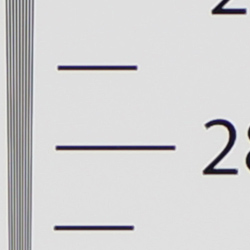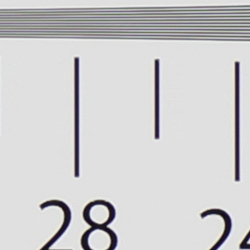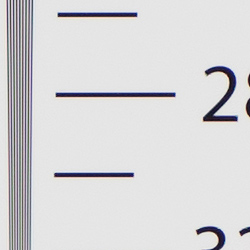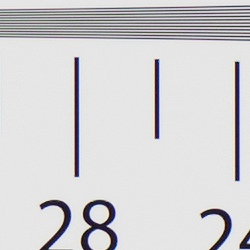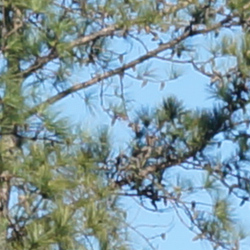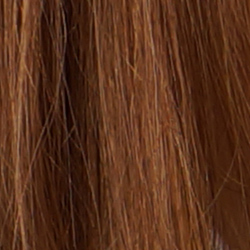
- Review contents
- Pro shooter's report
- Design & tech overview
- Image quality & test shots
- Performance results
- Video results
- Final conclusion
- Discuss the A99
- Image quality comparison
- Compare the Sony A99 to its competitors in detail, color, noise and noise suppression across a range of ISOs.
- In-depth image analysis
- In-depth analysis of Sony A99 test images, focusing on factors like color, white balance, sharpness, active D-lighting, dynamic range, low light and print quality.
- High ISO NR
- Noise suppression is the enemy of detail at High ISO's. See how the Sony A99 performs in this difficult task.
- RAW Comparison
- Compare the A99 to its competitors (in the raw).
Sony A99 Image Quality
On this page:
Color
Sensor
Resolution
Sharpness & Detail
ISO & Noise Performance
Extremes: Sunlit, dynamic range and low light tests
Print Quality
Color
Saturation & Hue Accuracy
Typical saturation levels at lower ISOs, with about average hue accuracy. Saturation increases at higher ISOs while hue accuracy decreases.
Saturation
Like a lot of cameras, the Sony A99 pumps strong reds and dark blues moderately, pushes darker orange, greens, purples and browns just a little, but undersaturates yellow, aqua and cyan tones slightly. The A99's mean color saturation of 111.1% (11.1% oversaturated) at base ISO is just a touch higher than average for a professional SLR, though the camera allows you to tweak saturation to your liking, or choose a different color mode. Saturation remains fairly consistent up to ISO 1,600, but actually increases at higher ISOs, up to 122% at ISO 25,600. Most consumer digital cameras produce color that's more highly saturated (more intense) than found in the original subjects. This is simply because most people like their color a bit brighter than life.

|
||||
| ISO Sensitivity | ||||
|
In the diagram above, the squares show the original color, and the circles show the color that the camera captured. More saturated colors are located toward the periphery of the graph. Hue changes as you travel around the center. Thus, hue-accurate, highly saturated colors appear as lines radiating from the center. Mouse over the links to compare ISOs. |
||||
Skin tones
Here, when adjusted for the correct white balance, the Sony A99 did well, producing natural-looking lighter Caucasian skin tones with a pink tint, though darker skin tones show a slight push toward orange. Where oversaturation is most problematic is on Caucasian skin tones, as it's very easy for these "memory colors" to be seen as too bright, too pink, too yellow, etc.
Hue
The Sony A99 shifts cyan toward blue, red toward orange, orange toward yellow and yellow toward green, but shifts are relatively minor. (The cyan to blue shift is very common among the digital cameras we test; we think it's a deliberate choice by camera engineers to produce better-looking sky colors.) With an average "delta-C" color error of 5.36 after correction for saturation, overall hue accuracy is fairly typical, perhaps just slightly lower than average for a professional DSLR at base ISO. Hue accuracy decreases slightly as ISO increases, with delta-C color error peaking at 6.27 at the maximum ISO. Hue is "what color" the color is.
Saturation Adjustment
The Sony A99 has a total of seven saturation settings available, three above and three below the default saturation. The fine steps between settings mean you can program the camera to just the level of saturation you prefer, a feature we look for in cameras. Saturation also has little effect on contrast, which is what you want.
| Saturation Adjustment Examples | ||||
|
|
|
|
|
|
| -3 | -1 | 0 | +1 | +3 |
The table above shows results with the seven saturation settings. Click on any thumbnail above, then click again to see the full-sized image.
|
|
|
|
|
See full set of test images with explanations |
||
Sensor
Exposure and White Balance
Indoors, incandescent lighting
Typical saturation levels at lower ISOs, with about average hue accuracy. Saturation increases at higher ISOs while hue accuracy decreases.
| Indoors White Balance Examples | |
|
|
|
|
Auto White Balance +0.7 EV |
Incandescent White Balance +0.7 EV |
|
|
|
|
Manual White Balance +0.7 EV |
2,600 Kelvin +0.7 EV |
Indoors, under normal incandescent lighting, color balance is overly warm and orange with the Auto white balance setting, though we've certainly seen worse. Still, a bit disappointing from a flagship model. Results with the Incandescent setting are slightly better, but still a bit too warm. The Manual setting performed the best, producing very neutral white balance. The 2,600 Kelvin setting which matches the color temperature of our lights resulted in a slightly cool, bluish image. The Sony A99 required +0.7 EV positive exposure compensation here, which is slightly above the average of +0.3 EV usually needed for this shot. (Our test lighting for this shot is a mixture of 60 and 100 watt household incandescent bulbs, a pretty yellow light source, but a very common one in typical home settings here in the U.S.)
Outdoors, daylight
Excellent results under harsh lighting, with good handling of contrast, color, and exposure.
| Outdoor Daylight White Balance Examples | |
|
|
|
|
Manual White Balance, +0.3 EV |
Auto White Balance, 0 EV |
Outdoors, the Sony A99 performed very well. +0.3 EV exposure compensation was required to keep the mannequin's face bright in our "Sunlit" Portrait shot. The average among the cameras we've tested is +0.7 EV, so the A99 performed better than average here. Contrast is somewhat high, as you might expect under such harsh lighting, but the camera does an excellent job of holding onto detail in both the shadows and highlights. Despite the bright appearance, few highlights were clipped in her shirt even without the help of Dynamic Range Optimization (DRO was off for these shots). Color balance is quite good, though Auto white balance rendered the model's face a touch warm, so we preferred Manual white balance here. Default exposure is quite good for our Far-field shot as well, again with excellent highlight retention, though some shadows are quite dark. Shadow detail is pretty good, though, with only the very deepest shadows plugged with noise and posterization. The Far-field shot also had good color using Auto white balance. Overall, excellent performance in harsh lighting.
See full set of test images with explanations
See thumbnails of all test and gallery images
Resolution
Very high resolution, about 2,700 lines of strong detail from JPEGs, up to 2,800 from Raw files.
In-camera Extra Fine JPEGs of our laboratory resolution chart revealed sharp, distinct line patterns down to about 2,700 lines per picture height in the horizontal direction, and about 2,700 in the vertical direction (some may argue for higher numbers, but aliasing artifacts begin to interfere before then), with extinction of the pattern occurring between 3,400 and 3,600 lines. We were able to extract slightly higher resolution from raw files using Adobe Camera Raw, about 2,800 lines horizontally and 2,750 vertically, but ACR also produced more visible color moiré. Use these numbers to compare with other cameras of similar resolution, or use them to see just what higher resolution can mean in terms of potential detail.
See full set of test images with explanations
See thumbnails of all test and gallery images
Sharpness & Detail
Sharp images with excellent detail, with minor edge-enhancement artifacts visible around high-contrast subjects. Low to moderate noise suppression visible in the shadows and areas of low contrast.
Sharpness
The Sony A99 captures sharp images with excellent detail overall, though very fine detail is a touch soft at default settings even at base ISO, likely due to noise reduction efforts. Some minor sharpening halos are also visible around high-contrast subjects such as the branches and pine cones in the crop above left (which was shot with a very sharp Carl Zeiss 24-70mm f/2.8 SSM lens at f/8). Fine detail such as the smaller branches and pine needles show minimal edge enhancement, but appear a touch soft. Remember, though, that we're looking at a 24-megapixel image on screen at 100%, so results here are actually quite good. See the bottom of this page for our analysis of printed results. Edge enhancement creates the illusion of sharpness by enhancing colors and tones right at the edge of a rapid transition in color or tone.
Detail
The crop above right shows low to moderate noise suppression in the darkest areas of the model's hair. Some individual strands are smudged together in the shadows and in areas of lower contrast, though the majority of strands are distinctly visible. Very good results here especially considering the resolution. Noise-suppression systems in digital cameras tend to flatten-out detail in areas of subtle contrast. The effects can often be seen in shots of human hair, where the individual strands are lost and an almost "watercolor" look appears.Raw vs In-Camera JPEGs
As noted above, the Sony A99 produces sharp in-camera JPEGs, though fine detail is just a touch soft and sharpening halos are visible around high-contrast elements. Improved detail with fewer sharpening artifacts can often be obtained from carefully processing raw files with a good converter. See below to see what we mean.

|
||||
|
In the table above, mousing over a link at the bottom will load the corresponding crop in the area above, and clicking on the link will load the full-resolution image. Examples include (from left to right): an in-camera Extra Fine JPEG, a raw file processed through Sony's Image Data Converter SR version 4.2 software at default settings, and the same ARW file converted with Adobe Camera Raw 7.3 and sharpened with unsharp make of 300% and radius 0.3 in Photoshop. Note that the Sony A99 won't shoot Extra Fine JPEGs together with raw (best quality JPEG is Fine when shooting RAW+JPEG), so the in-camera JPEG and raw images are not from the same exposure. |
||||
Sony's IDC 4.2 software produces images similar to in-camera JPEGs, perhaps just a touch softer than the camera's default JPEG processing. We weren't able to extract much more detail by fiddling with IDC's noise reduction and sharpening settings. The Adobe Camera Raw conversion shows slightly improved detail, with better definition of fine detail in the pine needles while at the same time producing fewer and thinner sharpening halos, though noise is a little more visible in flat areas such as the sky, as expected. You can always tweak noise reduction and sharpening to your liking after capture, though, one of the advantages of shooting in raw format. Still, in-camera JPEGs at low to moderate ISOs do a fine job at capturing most of the detail offered by the Sony A99's sensor.
ISO & Noise Performance
Very good noise versus detail performance up to ISO 3,200.
| ISO Series (Default High ISO Noise Reduction) | ||

|

|

|
| ISO 50 | ISO 100 | ISO 200 |

|

|

|
| ISO 400 | ISO 800 | ISO 1,600 |

|

|

|
| ISO 3,200 | ISO 6,400 | ISO 12,800 |

|
||
| ISO 25,600 | ||
ISOs 50 through 200 are very clean and almost identical in terms of noise. At ISO 400, we see a touch of softening due to stronger noise reduction, but images still have excellent detail. ISOs 800 through 1,600 show progressively less detail along with incremental levels of noise, however detail remains very good. ISO 3,200 shows a slightly larger decline in image quality with more visible noise and noise-reduction artifacts, though detail is still good and chroma noise well controlled. ISO 6,400 starts to look a little rough on screen, with stronger luminance noise and more obvious sharpening artifacts, though there's a moderate amount of fine detail left intact. Chroma noise in the form of yellow blotches is more noticeable and shadows and midtones. ISO 12,800 and especially 25,600 images contain quite a bit of luminance noise and much stronger noise reduction which obliterates fine detail. There's also a lot of chroma noise in the form of yellow and purple blotches, particularly in shadows. We don't however see the usual drop in saturation at high ISOs, which is a nice surprise.
Overall, very good high ISO performance, if not quite as good as some recent full-frame rivals. As always, see the Print Quality section below for maximum recommended print sizes at each ISO.
A note about focus for this shot: We shoot this image at f/4, usually using one of three very sharp reference lenses (70mm Sigma f/2.8 macro for most cameras, 60mm f/2.8 Nikkor macro for Nikon bodies without a drive motor, and Olympus Zuiko 50mm f/2.0 for Four Thirds and Micro Four Thirds bodies). To insure that the hair detail we use for making critical judgements about camera noise processing and detail rendering is in sharp focus at the relatively wide aperture we're shooting at, the focus target at the center of the scene is on a movable stand. This lets us compensate for front- or back-focus by different camera bodies, even those that lack micro-focus adjustments. This does mean, though, that the focus target itself may appear soft or slightly out of focus for bodies that front- or back-focused with the reference lens. We know this; if you click to view the full-size image for one of these shots and notice that the focus target is fuzzy, you don't need to email and tell us. :-) The focus target position will have been adjusted to insure that the rest of the scene is focused properly.
| Multi-frame Noise Reduction | |
|
|
|
| Default NR, 1/2000s, ISO 12,800 | Multi-frame NR, 1/2000s, ISO 12,800 |
|
|
|
Multi-frame Noise Reduction
This feature is similar to Sony's Hand-held Twilight mode which shoots a burst of six images with a single press of the shutter button and combines all six images into one composite image with reduced noise. But unlike Hand-held Twilight, Multi-frame NR gives you control over the ISO, aperture and shutter speed used, so you may still need to use a tripod depending on the exposure parameters you select. As you can see above, the image captured with Multi-frame Noise Reduction (right) is much cleaner than the standard image (left) despite both being shot at ISO 12,800, but it's also quite a bit softer. Multi-frame NR images do look better with some extra sharpening applied, though, and an added bonus is that ISO 51,200 equivalent is available for JPEGs (raw files are not supported).

|

|
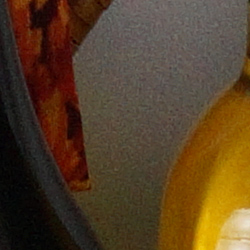
|

|
|
ISO 1,600
High ISO NR = "Off" |
ISO 1,600
High ISO NR = "Normal" |
Noise Reduction Oddity
The Sony A99's "Off" High ISO NR setting smudges the red leaf pattern in our Still Life target much more than the "Normal" or "Low" settings at higher ISOs. The Normal setting does reduce both chroma and luminance noise compared to the Off setting, though (lower crops). We've seen similar behavior with older Sony Alpha models such as the A55/A35/A33 and NEX-5/3, but not with more recent models. We have confirmed this happens with v1.0 firmware.
Extremes: Sunlit, dynamic range and low light tests
Very high resolution with very good dynamic range. Very good low-light performance, capable of capturing bright images in near darkness.
|
|
|
|
| 0 EV | +0.3 EV | +0.7 EV |
Sunlight
The Sony A99 handled the deliberately harsh lighting in the test above very well. We preferred the +0.3 EV exposure here, as the mannequin's face was a little dark at default exposure, and too bright at +0.7 EV. Contrast is a little high, but highlight detail is actually very good. Despite the apparent brightness, there are very few clipped highlights in the model's face and shirt. There are some pretty deep shadows though, but a lot of detail is intact except in the very deepest. Overall, very good results here. Still, be sure to use fill flash in situations like the one shown above; it's better to shoot in the shade when possible. See below for results with Dynamic Range Optimization and High Dynamic Range features enabled.
Because digital cameras are more like slide film than negative film (in that they tend to have a more limited tonal range), we test them in the harshest situations to see how they handle scenes with bright highlights and dark shadows, as well as what kind of sensitivity they have in low light. The shot above is designed to mimic the very harsh, contrasty effect of direct noonday sunlight, a very tough challenge for most digital cameras. (You can read details of this test here. In actual shooting conditions, be sure to use fill flash in situations like the one shown here; it's better to shoot in open shade whenever possible.)
Dynamic Range Analysis
A key parameter in a digital camera is its Dynamic Range, the range of brightness that can be faithfully recorded. At the upper end of the tonal scale, dynamic range is dictated by the point at which the RGB data "saturates" at values of 255, 255, 255. At the lower end of the tonal scale, dynamic range is determined by the point at which there ceases to be any useful difference between adjacent tonal steps. Note the use of the qualifier "useful" in there: While it's tempting to evaluate dynamic range as the maximum number of tonal steps that can be discerned at all, that measure of dynamic range has very little relevance to real-world photography. What we care about as photographers is how much detail we can pull out of the shadows before image noise becomes too objectionable. This, of course, is a very subjective matter, and will vary with the application and even the subject matter in question. (Noise will be much more visible in subjects with large areas of flat tints and subtle shading than it would in subjects with strong, highly contrasting surface texture.)
What makes most sense then, is to specify useful dynamic range in terms of the point at which image noise reaches some agreed-upon threshold. To this end, Imatest computes a number of different dynamic range measurements, based on a variety of image noise thresholds. The noise thresholds are specified in terms of f-stops of equivalent luminance variation in the final image file, and dynamic range is computed for noise thresholds of 1.0 (low image quality), 0.5 (medium image quality), 0.25 (medium-high image quality) and 0.1 (high image quality). For most photographers and most applications, the noise thresholds of 0.5 and 0.25 f-stops are probably the most relevant to the production of acceptable-quality finished images, but many noise-sensitive shooters will insist on the 0.1 f-stop limit for their most critical work.

|
| JPEG dynamic range |
The graph at right (click for a larger version) was generated using Imatest's dynamic range analysis for an in-camera Sony A99 JPEG file with a nominally-exposed density step target (Stouffer 4110). At the base ISO of 100 (the optimal ISO in our tests) with DRO and HDR settings turned off, the graph shows 11 f-stops of total dynamic range, and 7.87 f-stops at the "High" Quality level. Roll-off is gradual at the highlight end of the tone curve, though the shadow end is quite abrupt, and the last two steps are spread out, indicative of a tendency of the deepest shadows to break up into discrete levels if you try to brighten them too much. Those steps are extremely deep shadows though, so it's really not much of a concern. Overall, these are are very good results for in-camera JPEGs, though not quite as good as the best we've seen to date. The Nikon D600 for example managed 9.12 f-stops at the High Quality level, however total dynamic range was identical at 11 f-stops. Note that this measurement has a margin of error of about 1/3 f-stop, so differences of less than 0.33 can be ignored when comparing to other models.

|
| Raw dynamic Range |
The graph at right is from the same Stouffer 4110 stepchart image captured as a Raw (.ARW) file, processed with Adobe Camera Raw using the Auto setting, then manually tweaked. As can be seen, the score at the highest quality level increased from 7.87 to 9.7 f-stops, which is almost a two f-stop improvement, while total dynamic range increased 1.8 f-stops, from 11 to 12.8. The High Quality result is excellent, though again not quite as good as the best sensors we've tested. (The Nikon D600 for example scored 10.5 f-stops at the highest quality level, and 13.1 total.) It's worth noting here is that ACR's default noise reduction settings reduced overall noise somewhat (see the plot in the lower left-hand corner) relative to the levels in the in-camera JPEG, which would tend to boost the dynamic range numbers for the higher quality thresholds.
Contrast Adjustment
We really like it when a camera gives us the ability to adjust contrast and saturation to our liking. It's even better when those adjustments cover a useful range, in steps small enough to allow for precise tweaks. Just as with its saturation adjustment, the Sony A99's contrast setting meets both challenges.
| Minimum Contrast | |
|
|
|
|
Contrast set to lowest, 0 EV |
Contrast set to lowest, 0 EV |
At its lowest contrast setting, the A99 did a really nice job of opening up shadow detail while maintaining natural-looking skin tones. Overall, very good results here. (This is a really tough shot; the Sony does a much better than average job handling it.)
| Contrast Adjustment Examples | ||||
|
|
|
|
|
|
| -3 | -1 | 0 | +1 | +3 |
The table above shows five of the seven contrast settings, including the default and two extremes. It's pretty hard to evaluate small differences in contrast on small thumbnails like these, so click on any thumbnail to go to the full-size image.
Sony's contrast adjustment has some effect on color saturation, though not much. Contrast and saturation are actually fairly closely coupled, so it's a good trick to be able to vary one with out the other changing as well.
| Outdoor Portrait DRO Comparison | |
|
|
Setting: Auto (Default) Off Level 1 Level 2 Level 3 Level 4 Level 5 |
|
|
|
Dynamic Range Optimization
is Sony's name for their single exposure dynamic range enhancement technology. DRO divides the image into small areas, analyzes the range of brightness of each area, and adjusts the camera's image processing parameters accordingly to make the best use of the available dynamic range. Auto DRO is enabled by default on the Sony A99. You can also set the level manually, from 1 ("weak") to 5 ("strong"), or turn it off. As one would expect, DRO is only available for JPEG files.
The above thumbnails and histograms show the effects of the various levels of DRO on our "Sunlit" Portrait shot with no exposure compensation. Mouse over the links to load the associated thumbnail and histogram, and click on the links to visit the full-resolution image. As you can see from the thumbnails and associated histograms, DRO had only a slight effect on the highlights in this shot, though few highlights were clipped to begin with. The bulk of the difference between different levels of DRO is found in the shadows and darker midtones. The stronger the DRO level, the more boost is applied to darker areas. Boosting shadows does reveal a bit more noise, but the A99's noise levels at low ISOs are low enough that this shouldn't be an issue for most applications. The default Auto DRO setting did a pretty good job here, producing a fairly well-balanced image compared to Off.
| Far-field DRO Comparison | |||
|
|
|||
Above, you can see the effect of DRO settings on our Far-field shot. The default Auto setting again produced a good exposure overall, despite the harsh lighting.
|
|
|
|
|
Setting: Off (Default) Auto 1 EV 2 EV 3 EV 4 EV 5 EV 6 EV |
|
|
|
High Dynamic Range
The Sony A99's HDR mode takes three images in rapid succession, one nominally exposed, one underexposed, and one overexposed, then combines them into one high dynamic range JPEG automatically. Lighter areas from the underexposed image are combined in-camera with darker areas from the overexposed image to produce an image with increased dynamic range. The camera then saves a single composite image, as well as the nominally exposed image. The overlaid images are micro-aligned by the camera, but it can only correct for so much movement. If it can't micro-align successfully, an icon indicating HDR capture failed will appear. For best results, the subject should not move or blink, so it's not really intended for portraits. There is also a manual mode where you can select 1 EV ("weak") to 6 EV ("strong") difference in exposures.
Mouse over the links to load the associated thumbnail and histogram, and click on the links to visit the full-resolution image. As you can see, the highest settings produce images that looked flat and unnatural with this scene, however Auto and the lower manual settings did a pretty good job at boosting shadows. reducing highlights, while still retaining enough contrast.
| Far-field HDR Comparison | |||
|
|
|||
| Off (default) | Auto | 1 EV | 2 EV |
| 3 EV | 4 EV | 5 EV | 6 EV |
Above, you can see the effect of HDR settings on our Far-field shot. Notice the ghosting of the flags or people
Low Light
The Sony A99 performed well in our low light test, producing bright images down to the lowest light level we test at (1/16 foot-candle) at all ISO settings, though ISO 50 is a bit dim at the lowest light levels because of the 30 second limit in shutter speed (there is a bulb mode for longer exposures). Noise is well controlled up to ISO 3,200, though as expected, at higher ISOs there are moderate to high amounts of luminance noise and some blotchy chroma noise.
Auto white balance did a pretty good job here, producing a slightly cool color balance at most ISOs and light levels, though dark colors took on a greenish cast at higher ISOs and lower light levels.
We didn't detect any issues with stuck or hot pixels (except when long exposure noise reduction is turned off, where you'd expect to see them), and only some very minor horizontal banding is visible at very high ISOs, but that's not uncommon. Some minor heat blooming emanating from the bottom edge is visible at highest ISOs, but again, that's normal at extreme ISOs.
The Sony A99's autofocus system was able to focus on the subject down to the 1/16 foot-candle light level unassisted with an f/2.8 lens, and in complete darkness with AF assist enabled. This is very good performance, though some DSLRs are able to autofocus below 1/16 foot-candle without AF assist.
How bright is this? The one foot-candle light level that this test begins at roughly corresponds to the brightness of typical city street-lighting at night. Cameras performing well at that level should be able to snap good-looking photos of street-lit scenes.
NOTE: This low light test is conducted with a stationary subject, and the camera mounted on a sturdy tripod. Most digital cameras will fail miserably when faced with a moving subject in dim lighting. (For example, a child's ballet recital or a holiday pageant in a gymnasium.) Thanks to their phase-detect AF systems, digital SLRs like the Sony A99 tend to do much better than point & shoots, but you still shouldn't expect a quick autofocus lock with moving subjects. (A useful trick is to just prop the camera on a convenient surface, and use its self-timer to release the shutter. This avoids any jiggling from your finger pressing the shutter button, and can work quite well when you don't have a tripod handy.)
Print Quality
Excellent 30 x 40 inch prints at ISO 50 and 100; stunning 13 x 19 prints at ISO 1,600; and a very good 8 x 10 inch print at 6,400.
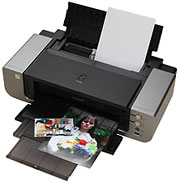 ISOs 50 and 100 images are excellent at 30 x 40, with stunning detail and vibrant color. Prints are also quite usable at 36 x 48 with only a few areas showing a slight loss of sharpness. Even the 40 x 60 inch prints will make a nice wall display.
ISOs 50 and 100 images are excellent at 30 x 40, with stunning detail and vibrant color. Prints are also quite usable at 36 x 48 with only a few areas showing a slight loss of sharpness. Even the 40 x 60 inch prints will make a nice wall display.
ISO 200 makes terrific 24 x 36 inch and very usable 30 x 40 inch prints.
ISO 400 images look great at 20 x 30, sharp and crisp, with 24 x 36 inch prints still very usable with only minor blurring of certain areas.
ISO 800 is also nice and crisp at 20 x 30, with only minor luminance noise becoming apparent at 24 x 36.
ISO 1,600 starts to see minor loss of definition in our ever-difficult red swatch at 16 x 20, but is still a nice print, and stunning at 13 x 19.
ISO 3,200 shows some grain at 16 x 20, with some noticeable softening in the red channel, but makes for a nice print at 13 x 19 and an excellent one at 11 x 14. Even a 16 x 20 will work here for a wall display.
ISO 6,400 makes an amazingly sharp 11 x 14 print. This is -not- your grandad's DSLR, that's for sure. Minor grain is apparent, but becomes a non-issue for the ever-popular 8 x 10 inch prints.
ISO 12,800 8 x 10s are usable for a wall print, with 5 x 7s quite nice here. Special note for ISO 6,400 and 12,800: if you don't mind a minor boost in grain in the background you can push the size up a level and still get nice saturation and color renditioning.
ISO 25,600 5 x 7s have amazing color for such a super-high ISO, and 4 x 6 inch prints look crisp and clear.
One of the most telling parts of our test target at higher ISOs is the shadowed area on the wall *behind* the test subjects themselves. Manufacturers are doing a better and better job of reducing noise while preserving subject detail, but these shadowed, flat gray areas are very revealing of residual noise, and one of the easiest places to see patchy chroma noise. Even here, though, the Sony A99 excels, easily holding its own against leading competitors in its price and resolution category.
Testing hundreds of digital cameras, we've found that you can only tell just so much about a camera's image quality by viewing its images on-screen. Ultimately, there's no substitute for printing a lot of images and examining them closely. For this reason, we now routinely print sample images from the cameras we test on our Canon Pro9000 Mark II studio printer, and the Canon Pixma MP610 here in the office. (See the Canon Pixma Pro9000 Mark II review for details on that model.)

